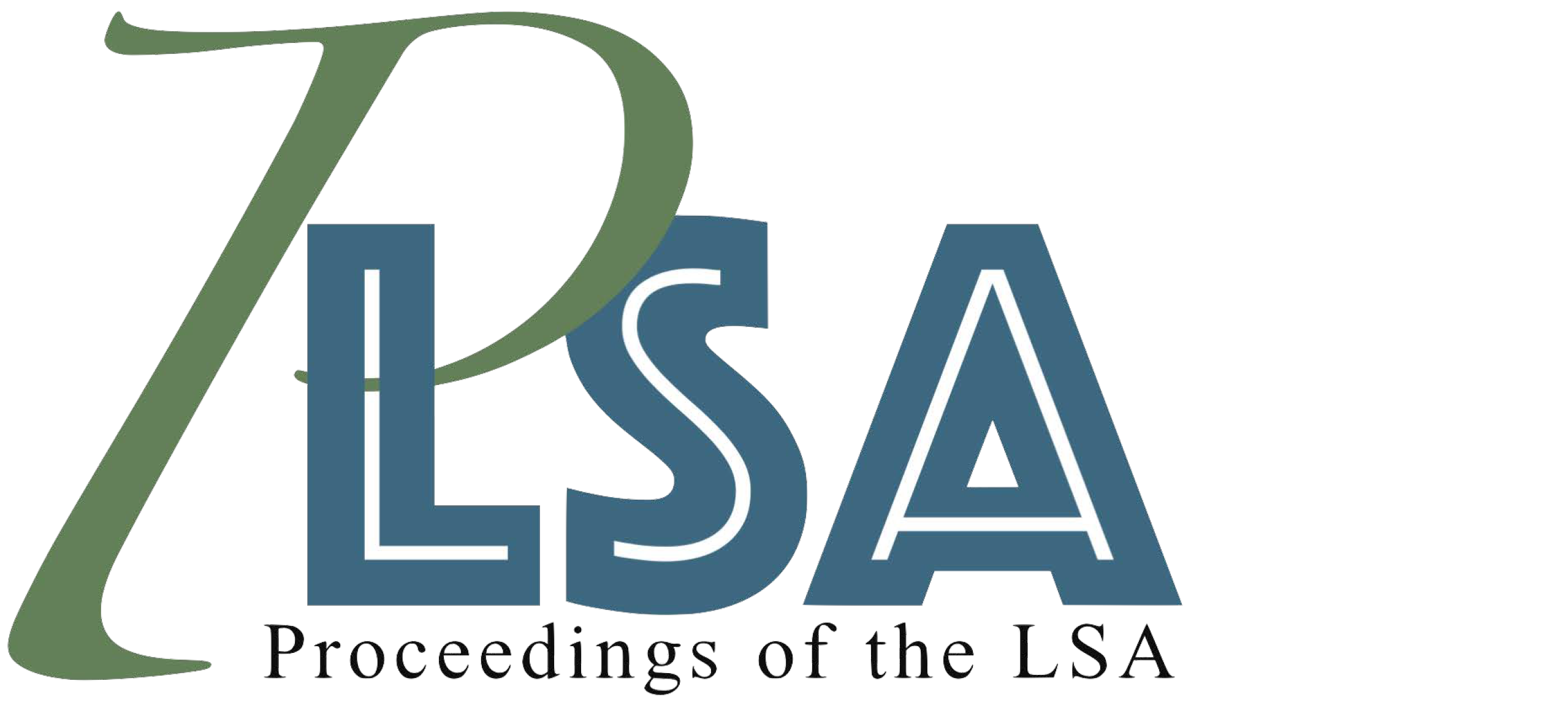Inactive gap formation: An ERP study on the processing of extraction from adjunct clauses
DOI:
https://doi.org/10.3765/plsa.v5i1.4775Keywords:
psycholinguistics, semantics, syntax, neurolinguistics, filler-gap dependencies, islands, EEGAbstract
Filler-gap (movement, extraction, displacement) dependencies are processed actively, i.e., comprehenders anticipatorily commit to an interpretation of the sentence before encountering bottom-up evidence. This suggests that comprehenders make structural commitments to how a sentence will unfold shortly after encountering a filler NP. However, the grammaticality of some filler-gap dependencies may depend on semantic and pragmatic features of the sentence that are not typically considered in studies on filler-gap dependencies. One particular case is extraction from adjunct clauses, in which the filler NP may only grammatically be understood as the object of a non-finite adjunct clause if the main verb is an achievement predicate (e.g., What coffee did you arrive [ drinking ]? (Truswell 2011). We present evidence from an EEG study demonstrating that comprehenders do not actively construct filler-gap dependencies in constructions such as these. Instead, they “inactively” build the dependency, only after integrating semantic information about the adjunct clause into the sentence.Downloads
Published
2020-05-17
Issue
Section
Articles
License
Published by the LSA with permission of the author(s) under a CC BY 4.0 license.
How to Cite
Kohrt, Annika, Trey Sorensen, Peter O'Neill, and Dustin A. Chacón. 2020. “Inactive Gap Formation: An ERP Study on the Processing of Extraction from Adjunct Clauses”. Proceedings of the Linguistic Society of America 5 (1): 807–821. https://doi.org/10.3765/plsa.v5i1.4775.
